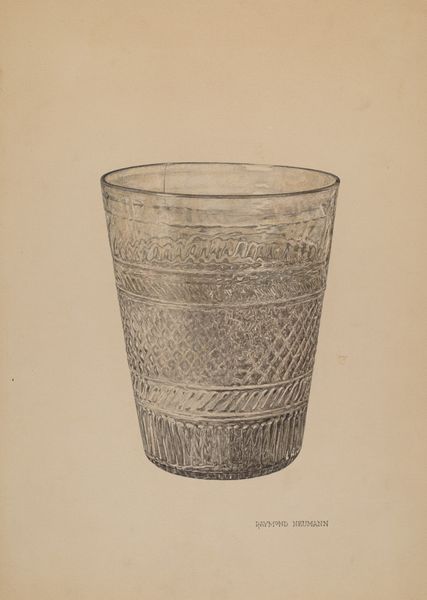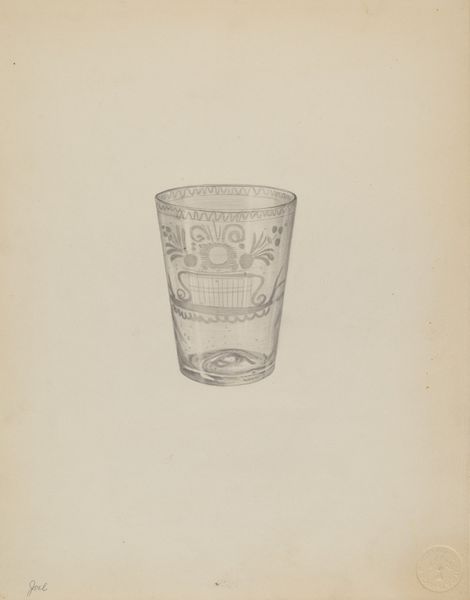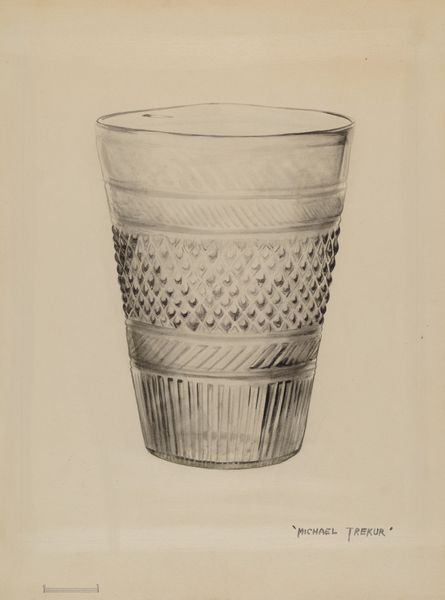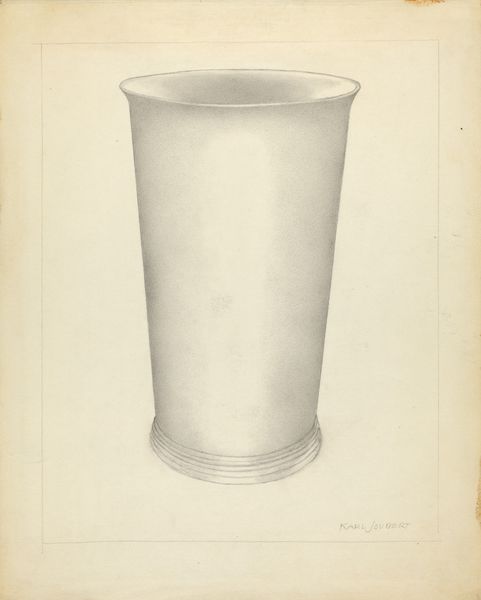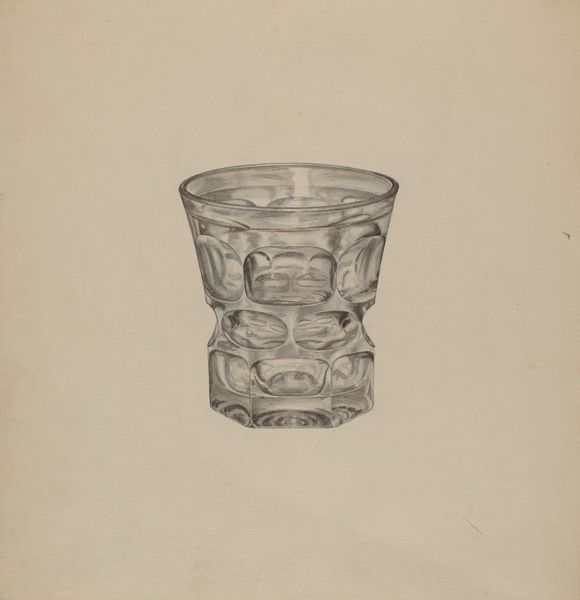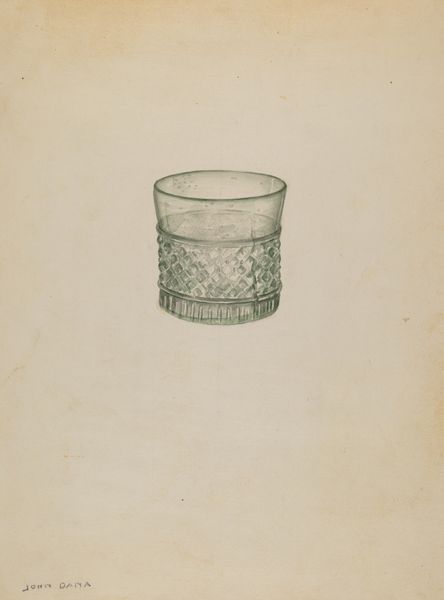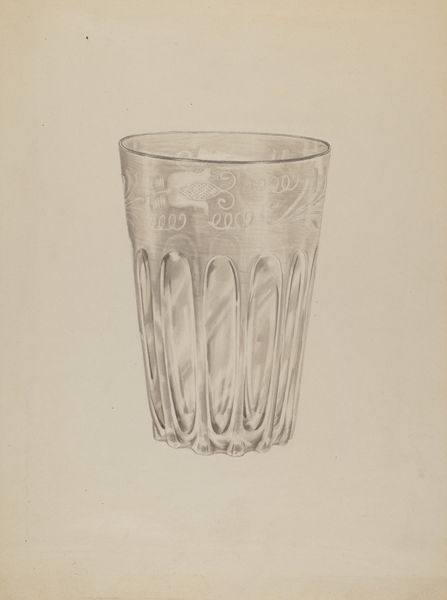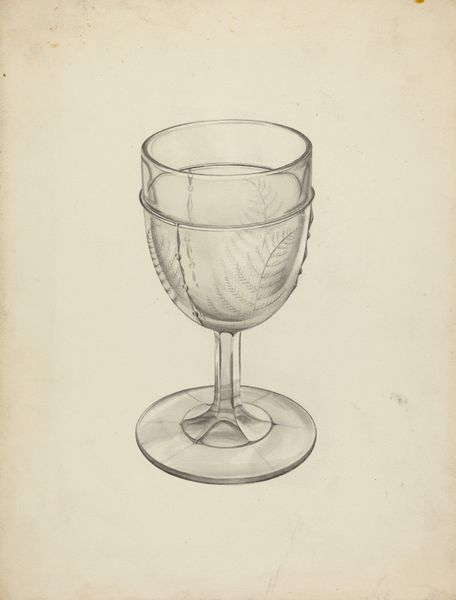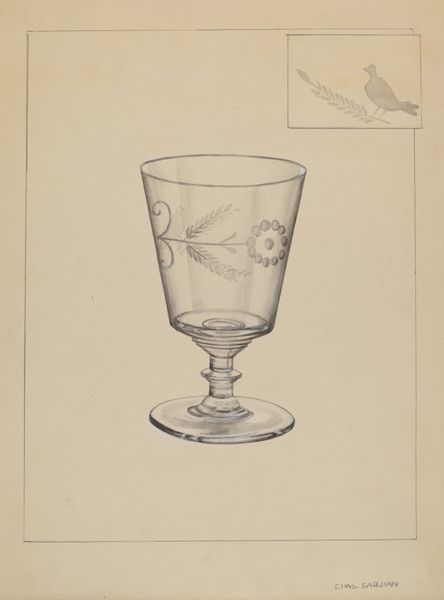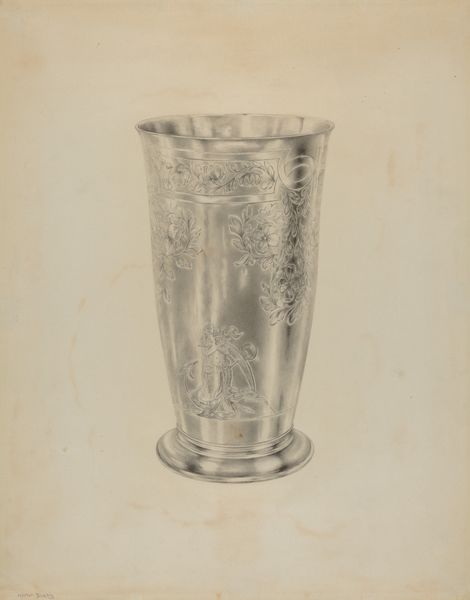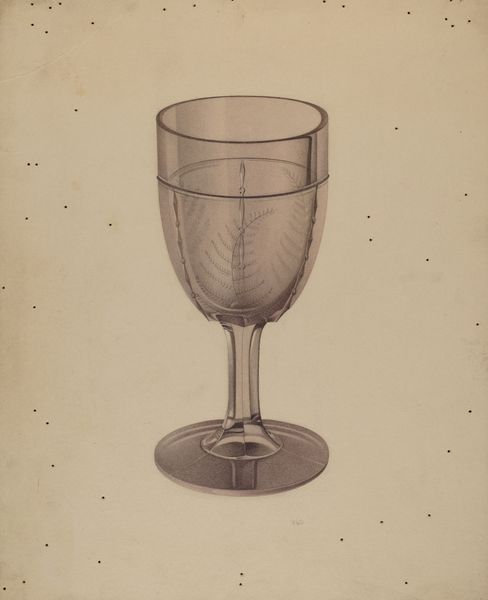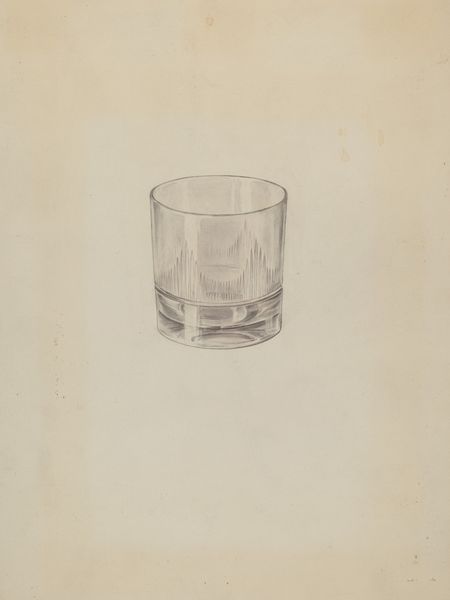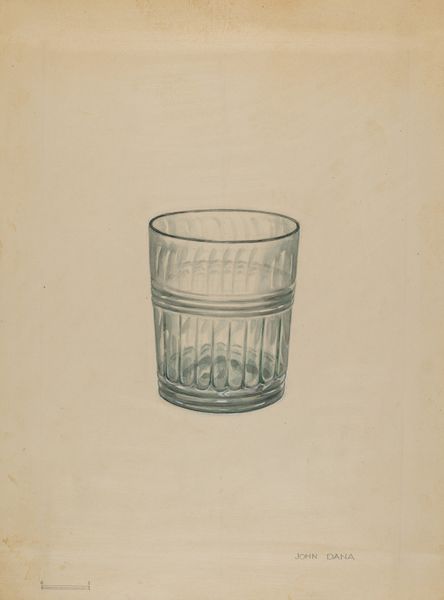
drawing, pencil, graphite
#
drawing
#
pencil drawing
#
pencil
#
graphite
#
realism
Dimensions: overall: 29.1 x 23 cm (11 7/16 x 9 1/16 in.)
Copyright: National Gallery of Art: CC0 1.0
Editor: Here we have Janet Riza's pencil drawing, "Flip Glass," created around 1936. It’s a remarkably detailed study, capturing the texture of the glass. What historical narratives do you see at play within it? Curator: That's a great observation! It makes me wonder about the role of representational drawing during the Depression. In a period marked by intense social realism, why would an artist focus on a relatively quotidian object? Was it simply an aesthetic exercise, or might it represent something more? What does the subject, glass, historically represent? Editor: Maybe a simple pleasure in a difficult time? Glassware, even if mass-produced, might have symbolized a degree of aspiration for the middle class. Curator: Precisely. So, we have to think about the culture of consumerism, even in times of economic hardship. Moreover, the artist’s technique—the detailed rendering in graphite—speaks to a commitment to craftsmanship. Do you see a tension between this detailed labor and the mundane subject matter? Editor: I do. The labor involved elevates the ordinary to something worthy of attention. Could it be a subtle comment on the value of work itself? Curator: That’s an interesting line of inquiry. Art produced under economic pressure reflects on social values, including the labor involved in production and even consumption. Is this glass drawing a simple still life, or does it participate in these deeper issues? What do we learn by elevating the "minor" arts of design and drawing? Editor: I hadn't considered it that way before. I was so focused on its representational aspect. Thanks, that perspective has opened my eyes to its social context. Curator: And thank you! Thinking about it with you makes me question how we still separate 'high art' from the art of the everyday.
Comments
No comments
Be the first to comment and join the conversation on the ultimate creative platform.
